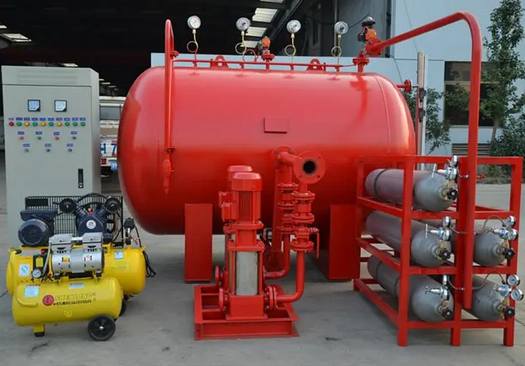Selection of temporary fire water supply pumps for construction sites
The selection of temporary fire water supply pumps for construction sites is a complex but crucial process that is directly related to the fire safety of the construction site. The following are key considerations and recommendations for the selection of temporary fire water supply pumps for construction sites:
1. Considerations
Site area and building height
Site area: Large construction sites may require pumps with larger flow rates to meet a wide range of fire protection needs.
Building height: High-rise buildings require higher lifts to ensure that water can be delivered to the required height.
Fire water volume and lift requirements
According to the building design fire protection code and the fire water supply system design requirements, calculate the minimum required fire water volume (usually expressed in liters/second or cubic meters/hour) and lift (in meters).

Water source conditions
Factors such as the location of the water source, the flow rate of the water, and the pressure of the water will affect the selection of the fire pump. The farther the water source is or the lower the water pressure is, the greater the flow rate and lift of the fire pump required.
Pump type and performance parameters
Common fire pump types include centrifugal pumps, axial flow pumps, mixed flow pumps, plunger pumps, etc. Among them, centrifugal pumps are often selected because of their high efficiency, stable performance and wide range of adaptability.
Performance parameters include flow rate, head, water pressure, etc. It is necessary to ensure that the rated flow rate and head of the selected pump can not only meet the maximum demand of the system, but also ensure normal operation under different working conditions.
Backup pump setting
Fire pump systems usually need to set up backup pumps, following the principle of "one for use and one for backup" or "multiple for use and one for backup" to improve the reliability and safety of the system.
Installation space and inlet and outlet water pipe interfaces
The installation space of the fire pump and the size of the inlet and outlet water pipe interfaces need to be considered to ensure that the pump can be installed smoothly and effectively connected to other parts of the system.
Maintenance and maintenance
The fire pump is a mechanical equipment that requires regular maintenance and maintenance. When selecting a model, the convenience and cost of maintenance and maintenance should be considered.
II. Selection recommendations
Determine the selection based on the site area and building height
For buildings below 24m in height, a water pump with a flow rate of 1.55L/s and a head greater than 0.06MPa can be selected.
For buildings above 24m in height, a water pump with a flow rate of 2.46L/s and a head greater than 0.08MPa should be selected.
Comprehensively consider the fire water volume and head requirements
Determine the minimum fire water volume and head required for the construction site through calculation or consultation with professional technicians, and select the corresponding fire pump model accordingly.
Select a fire pump with good quality and high reliability
Select a qualified and well-reputed brand, and confirm that the selected fire pump has been type-tested by the national fire product quality supervision and inspection agency and meets relevant national standards or industry standards.
Consider the setting of backup pumps
Set up backup pumps according to actual needs, and ensure that the capacity of the backup pump is not less than that of the largest working pump.
Pay attention to the installation space and inlet and outlet water pipe interfaces
During the selection process, the installation space of the pump and the size of the inlet and outlet water pipe interfaces should be fully considered to ensure that the pump can be installed smoothly and effectively connected to other parts of the system.
Pay attention to maintenance and maintenance
Select fire pumps that are easy to maintain and maintain to reduce the later maintenance costs and ensure the normal operation of the system.




